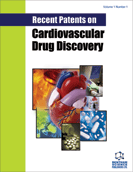Abstract
The thiazolidinediones (TZDs) rosiglitazone and pioglitazone improve glucose homeostasis through activation of peroxisome proliferator-activated receptor (PPAR)-γ. Their use, however, has been limited due to adverse effects that include body weight gain and edema leading to congestive heart failure. Selective PPAR-γ modulators (SPPARMs) are second generation PPAR-γ ligands designed to improve insulin sensitivity with minimal undesirable effects associated with first generation PPAR-γ agonists. INT131 is one of the first SPPARMs to reach human trials. Early phase human studies with INT131 look promising with changes in plasma lipids and glucose being equal or better than what is seen with rosiglitazone and pioglitazone treatment but without evidence of edema. This profile of improved glucose homeostasis, improved plasma lipids, and reduced inflammation in the absence of edema would be expected to reduce cardiovascular risk in patients with Type 2 diabetes mellitus. Recent patents of novel approaches for the use of PPAR-γ related compounds with the potential for this improved risk-benefit ratio are discussed.
Keywords: INT131, metabolic syndrome, PPAR gamma, SPPARM, type 2 diabetes, THIAZOLIDINEDIONES, Cardiovascular Risk, PPAR- MODULATORS, rosiglitazone, pioglitazone
 32
32


